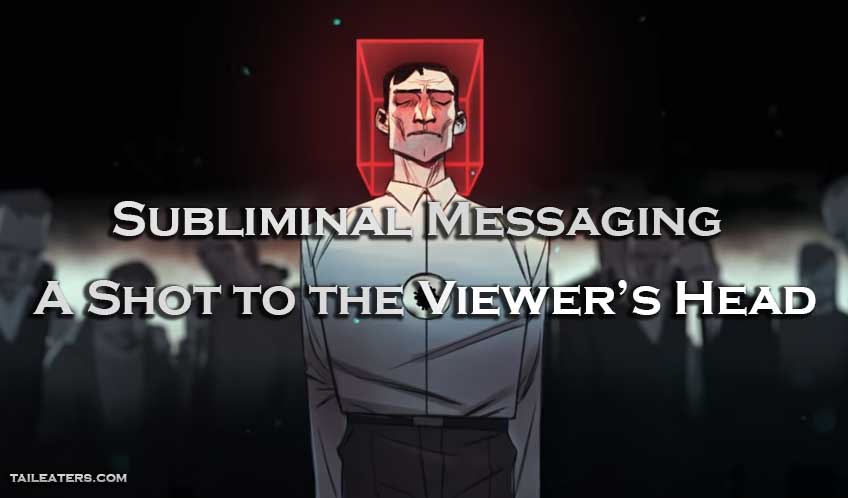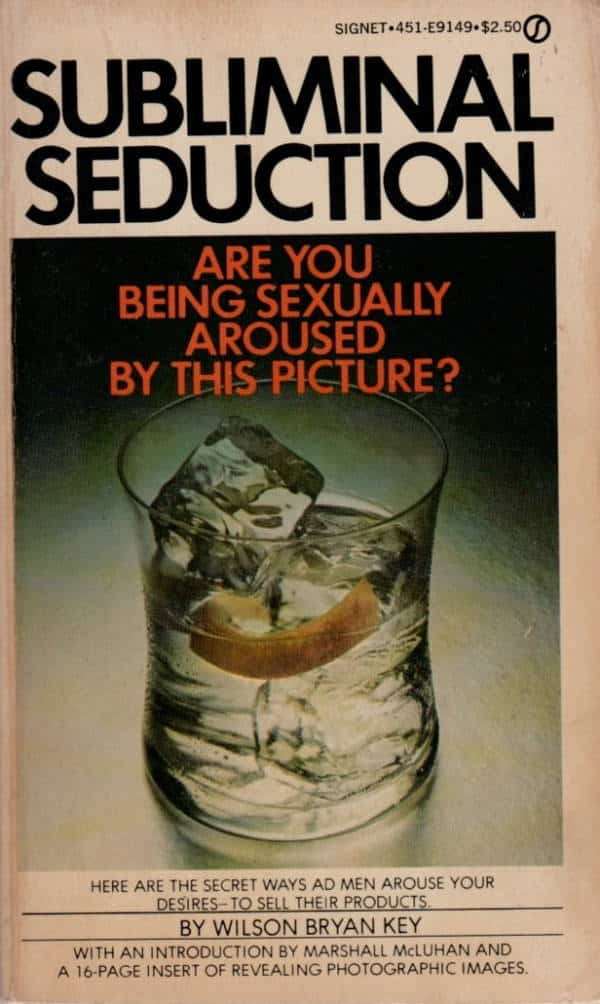
Subliminal Messaging: A Shot to the Viewer’s Head
The media plays a different role in today’s times, an essential as one might say. At dawn, the television already reports the news, or for some, it is the social media that give updates as soon as they open their eyes. On the way to work, the radio plays the tunes of yesterday to jazz up the day right. Before bedtime, any of these media help summarizes what has transpired throughout the day.
Without a doubt, the media is already embedded in everyone’s daily lives. It is now a vital aspect of society as a provider of news and entertainment. However, there is no guarantee of how strong its effects are on one’s mind and attitude.
Does the media affect the way a person thinks and acts? Moreover, if it does, how powerful is its impact?
The Hypodermic Needle or the Magic Bullet Theory
Without realizing it, the media has taken hold and has supreme power over its audience, no matter what age they are. It is what the “Hypodermic Needle Theory,” sometimes referred to as the “Magic Bullet Theory,” pertains to. The brain behind this theory is Harold Lasswell and has initially been perceived as part of a propaganda movement. It has been around since the 1920s, but by the way, everything is happening today, it is safe to say that the theory is still pretty much relevant.
Now, what is the idea behind the hypodermic needle theory? Imagine going to the hospital, and there would be a doctor or a person with knowledge in medicine who would facilitate the injection of whatever substance is deemed needed. The recipient, someone who does not have enough knowledge on what goes into the injection would probably just let the other person inject the hypodermic needle into his brain.
The same goes for its alternative name, the magic bullet theory. The concept behind it is, the media, as someone in authority or power, can choose whatever substance they would like to put in the magic bullet. It might not even be gun powder, hypothetically reminding of the truth, but it can be whatever they want it to be. The person on the receiving end, do not have any power to stop or even truly understand what is within the magic bullet.

One concrete example is a new parenting style that parents seem to have adopted these days. “YouTube Parenting” is when the adults let their children use their phones or tablets to stream YouTube videos while they get some things done. Most of the time, the parents pick one cartoon or nursery rhymes that their child likes the most, and lets it play endlessly until they are done with their errands and have the time for other activities with their children.
Indeed, these parents do not have the time to view each one of the videos before letting their children watch it. So, these children only see what the “creators” of the videos want them to see and with no one to correct them or tell them whether what they view is real. Hence, there is a high chance that what they see becomes the absolute truth.
Peppa Pig, for example, is one of the well-loved animated characters by children today. A few years back, somebody with the screen name of “Filthy Frank” inserted nine-second long clips into what seems like an innocent video of Peppa Pig. However, these clips feature some instructions on how to slit their wrists. “Remember kids, sideways for attention, longways for results,” he said on the video. Even more disturbing was that the video was available both on the mainstream YouTube platform and YouTube Kids.
The scenario presented above shows how powerless viewers are against the media and the hypodermic needle they insert into one’s system. These children do not have the capability to think on their own, let alone decide what the content does for them.
On the other hand, the media also has the capability to shape mindsets. Since they are the creators of the content, they can select which version of the truth they want on any platform they aim. Hence, it is possible that the media creates a typical mindset between individuals, no matter how big the group is.
Now, does the media also control the emotions of its users? The answer is always going to be yes. With the mindset-shaping abilities of the media, they can also invoke emotions: anger, joy, sadness, or a mixture of all of them. It all depends on what they want to show and how they display the content for their viewers.
Overall, the magic bullet theory projects how much power the media has over all types of people, no matter what age and without any regard to the content. As long as one has access, the media has control over them.
The Medium is the Message
“The medium is the message” is a phrase coined by renowned communication theorist and educator, Marshall McLuhan. As vague as it may seem, he was trying to convey a single, clear message to everyone: the medium, without any connection to the message it is trying to deliver, affects the way its content is perceived by the audience.
The medium pertained in this passage is the mass media that everyone knows of- the radio, television, newspaper, magazine, and quite recently, the internet. The message, on the other hand, is the content that is to be conveyed. It is quite debatable as to why McLuhan found the need to coin the phrase when everything is as simple as they may seem.

From the YouTube parenting example above, the children who continually get to watch YouTube videos on gadgets would probably associate the mobile phone or tablet with joy or happiness. Adults, on the other hand, view news written on tabloids than actual newspapers and sees the latter as somewhat on the more severe side. Hence, the medium used indeed affects the message it is trying to convey.
Subliminal Messaging
It has been long proven that the mind processes so much information, but not everything reaches the cognitive learning of a person. A lot of this information ends up in the unconscious learning aspect of people, or those that the mind does not seem necessary. Hence, it gets disregarded within seconds. (Froufe and Schwartz, 2001)
According to Treimer and Simonson (1988), “subliminal perception (or stimulation) describes any word, image, or sound that is not perceived within the normal range of consciousness, but that makes an impression on the mind.” (p.563) Usually, these are words or pictures that flash on the screen or audible cues that go by quickly that the eyes or ears may not be able to retain any memory of it consciously. Barthol and Goldstein (1959) explained that these are the stimuli that most people would probably not notice quickly. Furthermore, to answer whether or not it is “invisible,” they believe that it is not. Instead, it is bound by quite an unclear nature.
Even if the idea of subliminal messaging has been floating around for years, people took an interest, but it is often received with skepticism. Barthol and Goldstein (1959) believe that it is often associated with mass hypnotism, brain-washing, and the loss of free will. Why? Because it penetrates the unconscious part of the brain and is unclear to elicit the proper response from the person.

Brooks (1958) had some concern regarding free will and consciousness when he said: “The concept of free will underlies a free society. To govern themselves, people must be able to think for themselves. Recognizing that many of their motives are determined at an unconscious level, free people believe that practical decisions still can be made rationally, and resist all attempts to manipulate the subconscious to special ends.” (pp. 7-8) So, is it really because it taps the unconscious learning of the person, or because of its unclear nature that the subliminal messages are ignored?
According to Barthol and Goldstein (1959), it might be because of a person’s “attention threshold.” The threshold, in psychological terms, is the minimum amount of stimuli needed to elicit a person’s response. So since the person only perceives what they deem is essential at the moment, everything else false under their subconscious instead.
However, Barthol and Goldstein (1959) believe that even if a person is not fully aware of what is happening at the moment, it can still affect him.
The Two Working Together
On the effects of media and subliminal messaging, and the last note mentioned above, Barthol and Goldstein (1959) also provided a concrete example of how the subconscious still affects the perception and reception when one is engaged in using mass media.
Imagine going to a theater play. Usually, the audience is focused on the characters and how the story goes. However, external factors such as costumes, lighting, and foleys also play an essential factor in how the viewer receives the entire production. For example, as the story progresses, the characters’ dresses change from bright to dark colors, and the audience might feel gloomy along with the costume change. Same goes with dark lighting, either it presents a sad scene coming, or a bright illumination provokes happiness and light feeling. Footsteps indicate that someone is coming; hence, it evokes a feeling of suspense.
Another example, the hit South Korean drama, “Crash Landing On You,” inserted scenes where their main characters were happily eating barbequed or fried chicken. Since the launching of the drama, a famous chicken barbeque place in Korea has reported up to a 70% increase in sales compared to the week before its pilot episode. (Schwartz, 2020)
The examples presented are exactly what the advertisers or the media, in general, are banking on when opting to insert subliminal messaging into their content. By tapping the emotions and the interests of the parties, the media might be more successful in drawing the wanted response from their audience. However, its effectiveness still depends on a myriad of other factors.
First of all, Barthol and Goldstein also conclude that for a subliminal message to be successful, it must hold close to the threshold. Hence, even if thousands of people watch the same video with the same subliminal messaging, it is impossible to affect each one. Some would react as expected, and some would not, depending on how interested they are to the central stimulus.
It might also depend on how recognizable the subliminal message is for the reader. For example, a quick flash of the Coca Cola logo or a person eating a subway can promote the brand, provoke emotions, and possibly elicit a response from the intended audience.
Where Does That Leave Media Control?
At this point, it raises the question: if subliminal messaging is not as effective as they appear to be, especially since people generally have different interests, where does that leave media control as the Hypodermic Needle Theory said?
The operational word is there: control. The media still stays on top of everything and is the prime source of information and content. Hence, they would only need to learn, curve, and bend to elicit the intended response from their targeted audience.
How do they do that? Mass media today is very different from what it is yesterday, and offer a multi-verse of content types that may touch base with thousands of people with various interest on a single platform. Aside from demographic and media studies, the content creators are not as scared as they were with trial testing.
Still, it leaves the question of the effectivity of subliminal messaging. As proven by Barthol and Goldstein in 1959, it is certainly is a practice applied to elicit some sort of response from the audience. However, there are still and there will be people who would be affected by any subliminal message, while others would not react to it.
One thing is for sure, it is very much still used and practiced up to this day. For example, a change of color in the logo to elicit some sort of response from their audience like blue to establish trust, yellow for optimism, etc. So, it is up to the viewer to establish a stronger free will and awareness in order not to fall for the tactics induced by the media, or as the magic bullet theorizes, shot to the audience’s heads.
References:
Froufe, M., & Schwartz, C. (2001). Subliminal Messages for Increasing Self-Esteem: Placebo Effect. The Spanish Journal Of Psychology, 4(1), 19-25. https://doi.org/10.1017/s1138741600005618
McLuhan, E. (2020). Commonly Asked Questions about McLuhan – The Estate of Marshall McLuhan. Marshallmcluhan.com. Retrieved 19 May 2020, from https://www.marshallmcluhan.com/common-questions/.
Schwartz, W. (2020). [HanCinema’s News] ‘Crash Landing on You’ Boosts Barbecue Chicken Sales. HanCinema. Retrieved 19 May 2020, from https://www.hancinema.net/hancinema-s-news-crash-landing-on-you-boosts-barbecue-chicken-sales-138450.html.
Shraddha Bajracharya, “Hypodermic Needle Theory of Communication,” in Businesstopia, January 7, 2018, https://www.businesstopia.net/mass-communication/hypodermic-needle-theory-communication.
Treimer, M., & Simonson, M. (1988). Subliminal Messages, Persuasion, and Behavior Change. The Journal Of Social Psychology, 128(4), 563-565. https://doi.org/10.1080/00224545.1988.9713776
Ron is a neuropsychiatry intern finishing his Doctorate of Medicine. He has been in the scientific industry for nearly 10 years and specializes in curating evidence-based neuropsychiatry content. As of today, he is also teaching neuroscience to incoming doctors.
Learn to Lucid Dream and Gain Rewards
![]()
Learn to lucid dream and complete tasks for re-life rewards.



Recent Comments